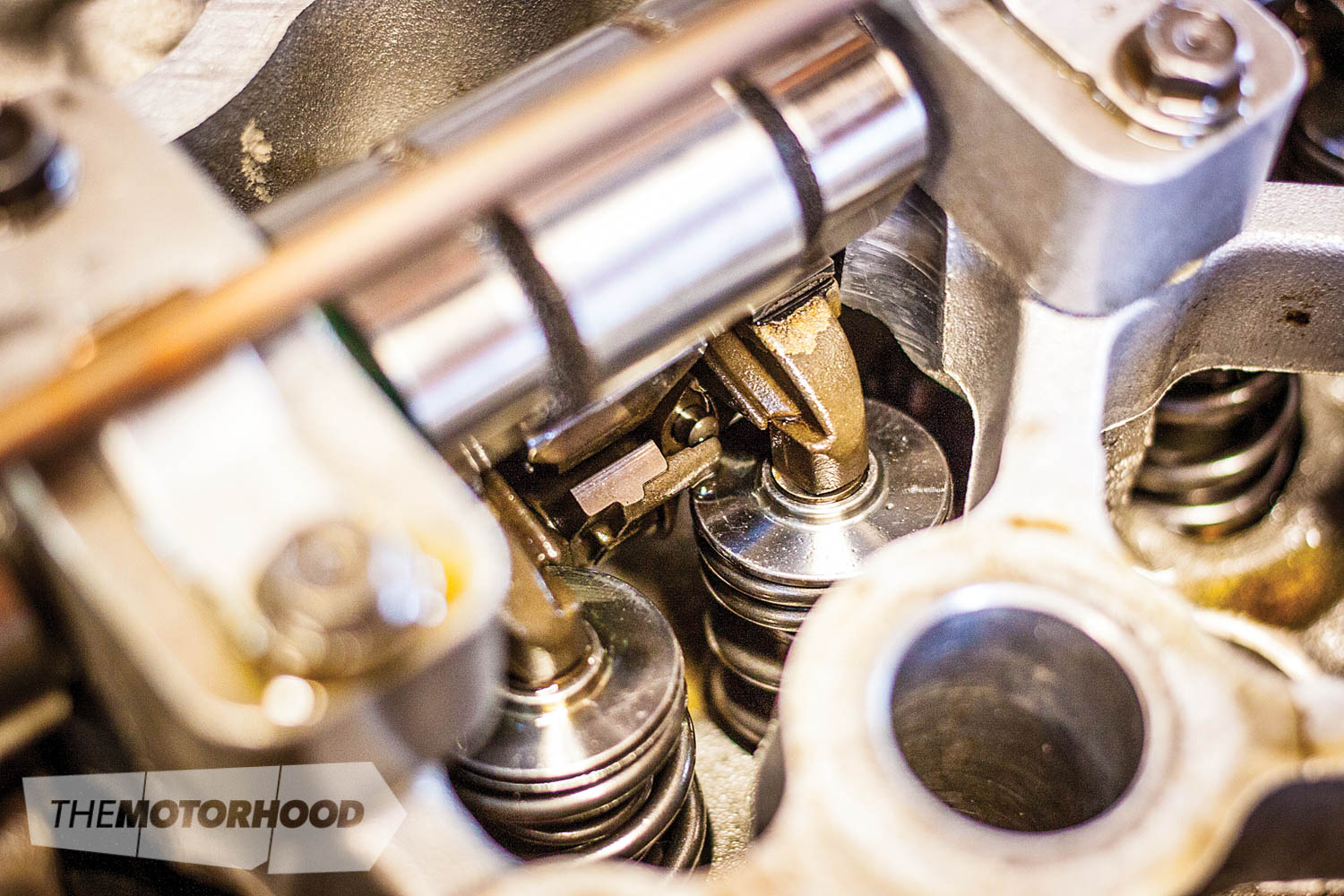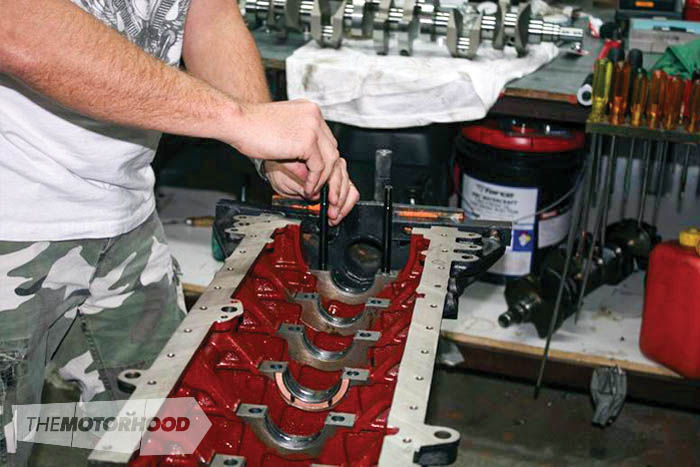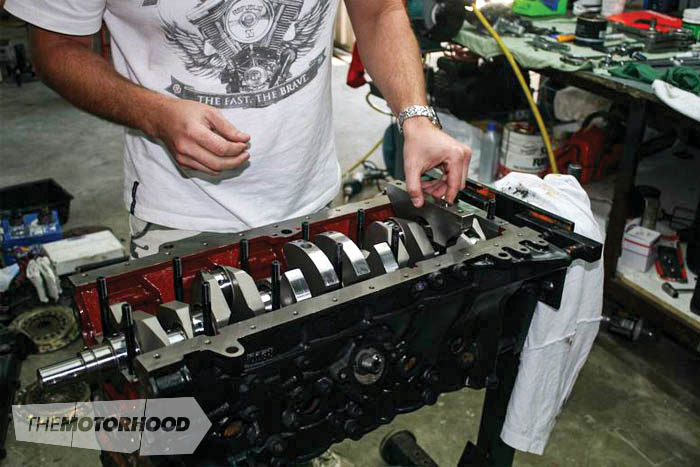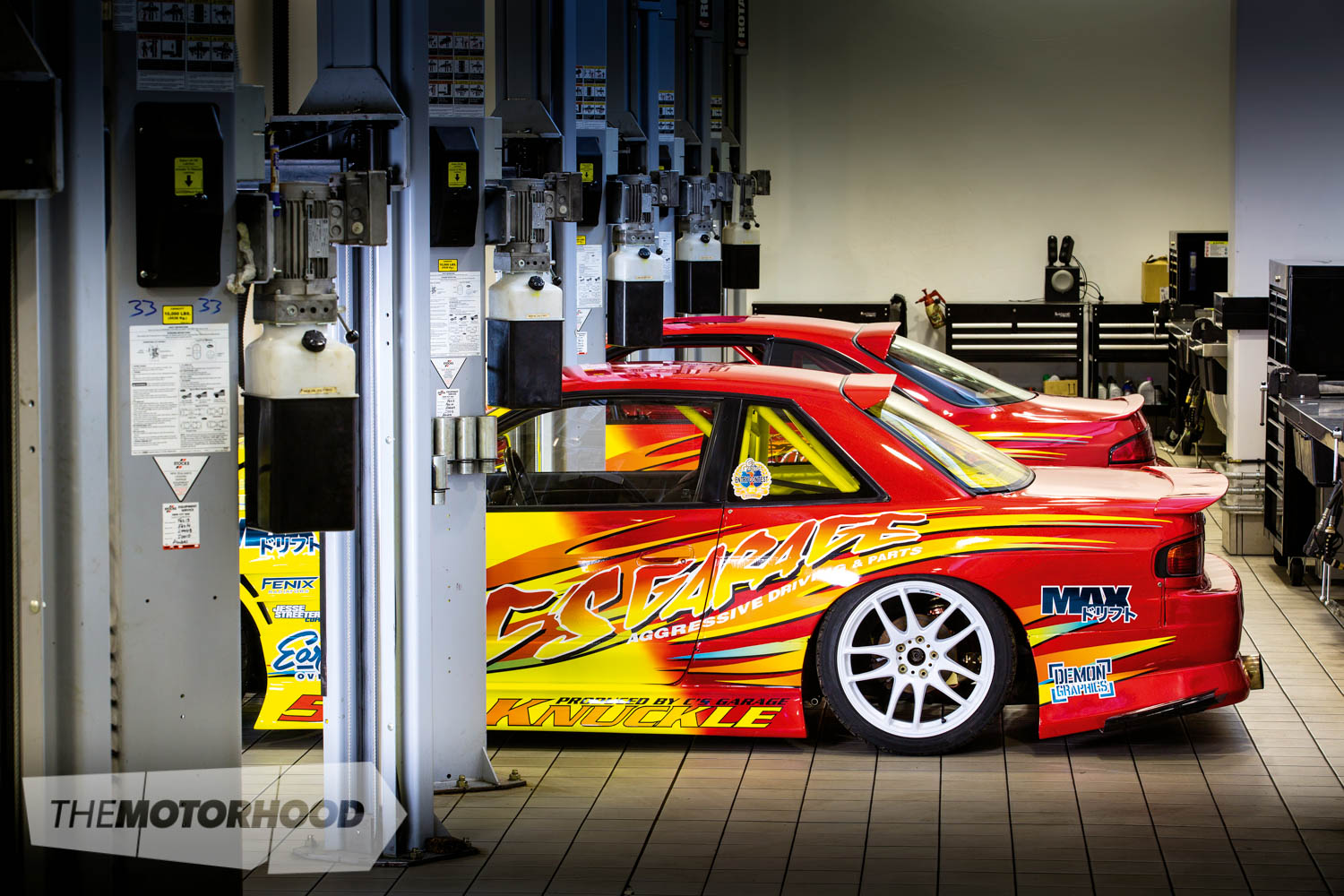
Over the next few months, we’re diving head first into the mystical art of building a street car to bring you a comprehensive step-by-step guide to the process.
Last issue, we started with sourcing and importing a car from Japan and we’ll move on to modifying the internal and external engine components; wiring in an aftermarket ECU and getting it tuned; upgrading the drive line to suit your new-found power; getting the car to sit at the perfect height and making sure that it has the required stopping power; flaring those guards and tucking your favourite set of wheels beneath them, then seeing them shod in the correct rubber; painting some metal or wrapping it in vinyl; tinting the windows; installing a big e-points bodykit; and tricking out the interior with the vital instrumentation, seats, and belts. The possibilities are endless, and we will explore them all.
In this month’s instalment, we’re focusing on how you can get the most out of your engine by creating the perfect package inside. Before you go throwing big wads of cash at all your favourite brand names and shops, though, check out what a few of the industry’s best had to say as they answered all our burning questions about head work, the rotating assembly, and block work.
The task is not as scary as it looks, and, with the help of the right people, it can be a relatively painless venture as long as you have the patience.
Head work
‘Head work’ example images courtesy of Pten DEvelopments
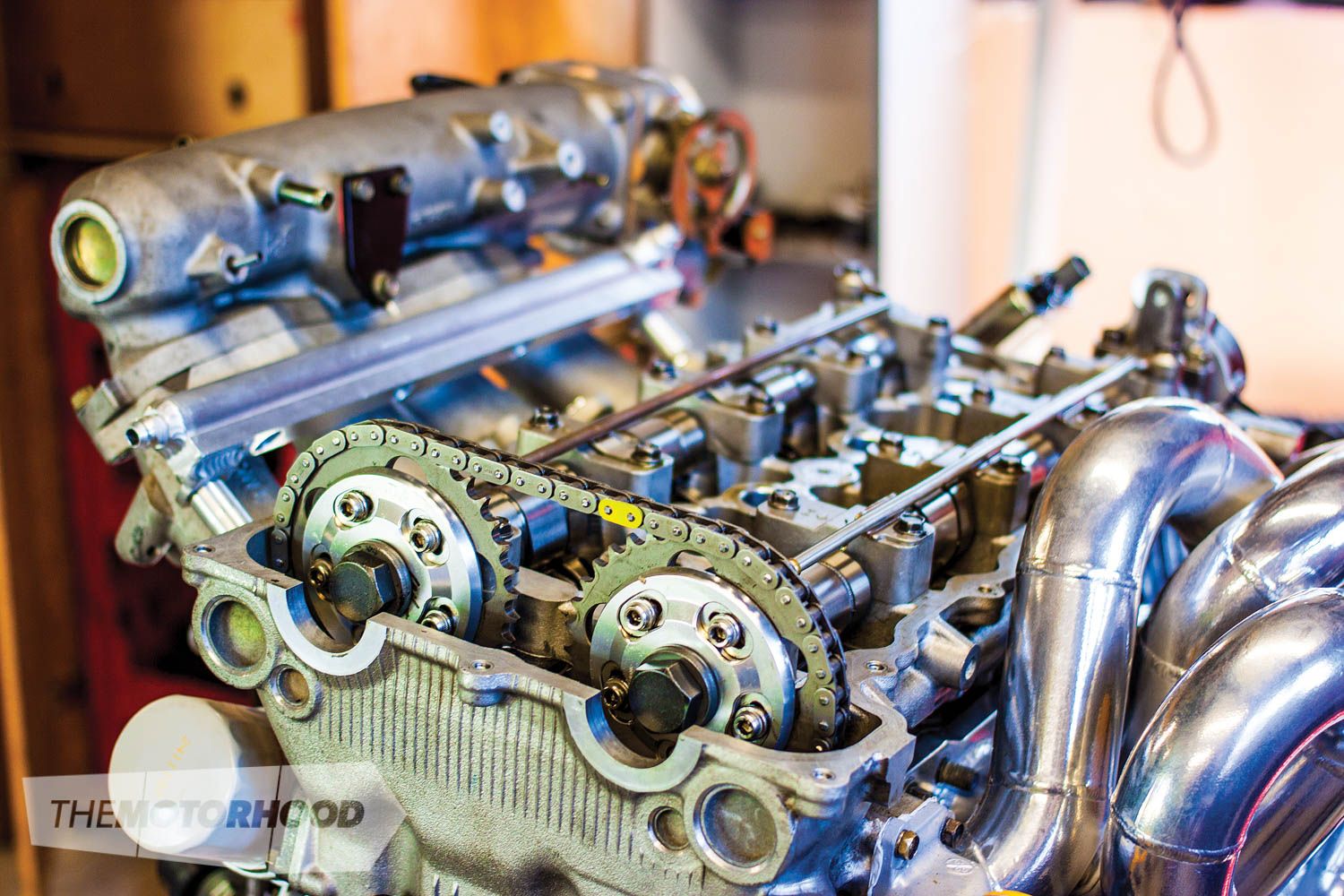
What role do the camshaft(s) and cam gear(s) serve?
Peter from Kennelly Cams told us: “The camshaft controls the valve motion, determining in its simplest form how long the valves are open for and how far the valves open. A single-cam engine has one cam that controls both intake- and exhaust-valve motion, whereas a twin-cam has a separate cam for each.
“The cam gear drives the cam, and, when adjustable cam gears are fitted, the cam can be moved to open and close the valves earlier, known as ‘advanced’, or later, known as ‘retarded’, allowing the cam to be tuned to achieve best performance. In the case of a twin-cam with both cams being adjustable, one can be advanced while the other is retarded. This gives lobe-separation angles — the angle between the centre point of the intake-valve motion and the centre of the exhaust-valve motion — that are either tighter or wider, allowing for more cam-tuning options.”
Is going for the biggest, angriest cam the best way to make power?
“Choosing the biggest cam is very rarely the way to make a fast car. All road cars will benefit more from mid-range power rather than top end. When you put your foot down to accelerate, you are far more likely to be using 4000rpm than 7000rpm. Cam choice is about matching the performance to the driving and the vehicle. When choosing the cam, other engine mods being done must be considered, such as intake style, turbo size, compression ratio, and cylinder-head flow. Consideration for whether the vehicle is auto or manual, heavy or light, and has a close- or wide-ratio gearbox is important, too. And then there is the idle — it’s pretty common to want a big lumpy idle, ’cause that’s what race cars have, and that’s cool. Problem is, race cars are like that because they have big cams with lots of overlap, and power production below 3–4000rpm or more is often very low. This doesn’t suit the street at all, unless you like playing catch-up. Smaller cams that have a good amount of overlap can still produce a decent lump on idle, and these make power way sooner than race cam[s] but won’t have as much top end. It’s a good compromise for the street, and it suits most enthusiast engine builds.
“Another important consideration when choosing cams is engine management. Most carburetted engines, or injected engines that use a MAF [mass airflow] sensor, can stand mild cams without a lot of tuning, and 260- to 270-degree cams can often be used as bolt-in options, whereas bigger cams significantly alter the engine’s efficiency at different rpm, and tuning will be required. EFI [electronic fuel injection] engines that use manifold-pressure [MAP] sensing rather than airflow sensing tend to hate cam changes without retuning, or sometimes even an aftermarket ECU. Anything bigger than about 260 degrees is likely to cause rough running at lower speed, drink fuel, make lots of black smoke, and often be all but impossible to drive.”
How do the valves and springs function inside the head(s)?
“While the cam lobe forces the valve open against the spring, it is the spring that does all the closing work. After full lift, when the spring is closing the valve, the cam controls how far the valve is closed at any point. The cam allows the closing valve to increase speed, building up to a peak, and then, more important, slows the valve down so that, when it lands on the valve seat, it is at a slow enough speed that it does not bounce back off. Higher engine speeds, more aggressive cams, and higher boost levels all require more spring pressure, so the closing valve can keep up with the cam. If the valve does not keep up, the valve will seat uncontrolled, causing bounce and, at best, a loss of power; at worst, catastrophic damage.”
What are the most common signs of wear and tear on these components?
“Cam lobes and cam followers should look smooth and flat. Scuffed and pitted surfaces are not good. All the lobes should look similar, too. Lobes that look shorter and more rounded are well worn. Followers that are hollowed out at all, or have lines that can be felt, need attention. Cam gears should not have significant wear where the belt or chain runs. If you can feel an edge, it’s replacement time. Valve springs can be hard to assess without specialized equipment, but the valve should not push down easily when assembled, and the springs should all be the same height when removed.”
What machine work needs to be done to support these upgrades?
“Most engines can take mild cams without machining required. More radical cams can require head clearancing to fit higher-lift lobes, spring seats machined to fit longer springs, valve pockets machined in the pistons to avoid contact, and many more issues that may not seem obvious.
“Remember when building an engine that it is not just a collection of parts but a package where everything has to work together. When considering one part, think of all the other parts it has to interact with, or that come anywhere near it, and, best of all, talk to people who have done it before.”
Kennelly Cams
03 366 3378
kcams.co.nz
Rotating assembly
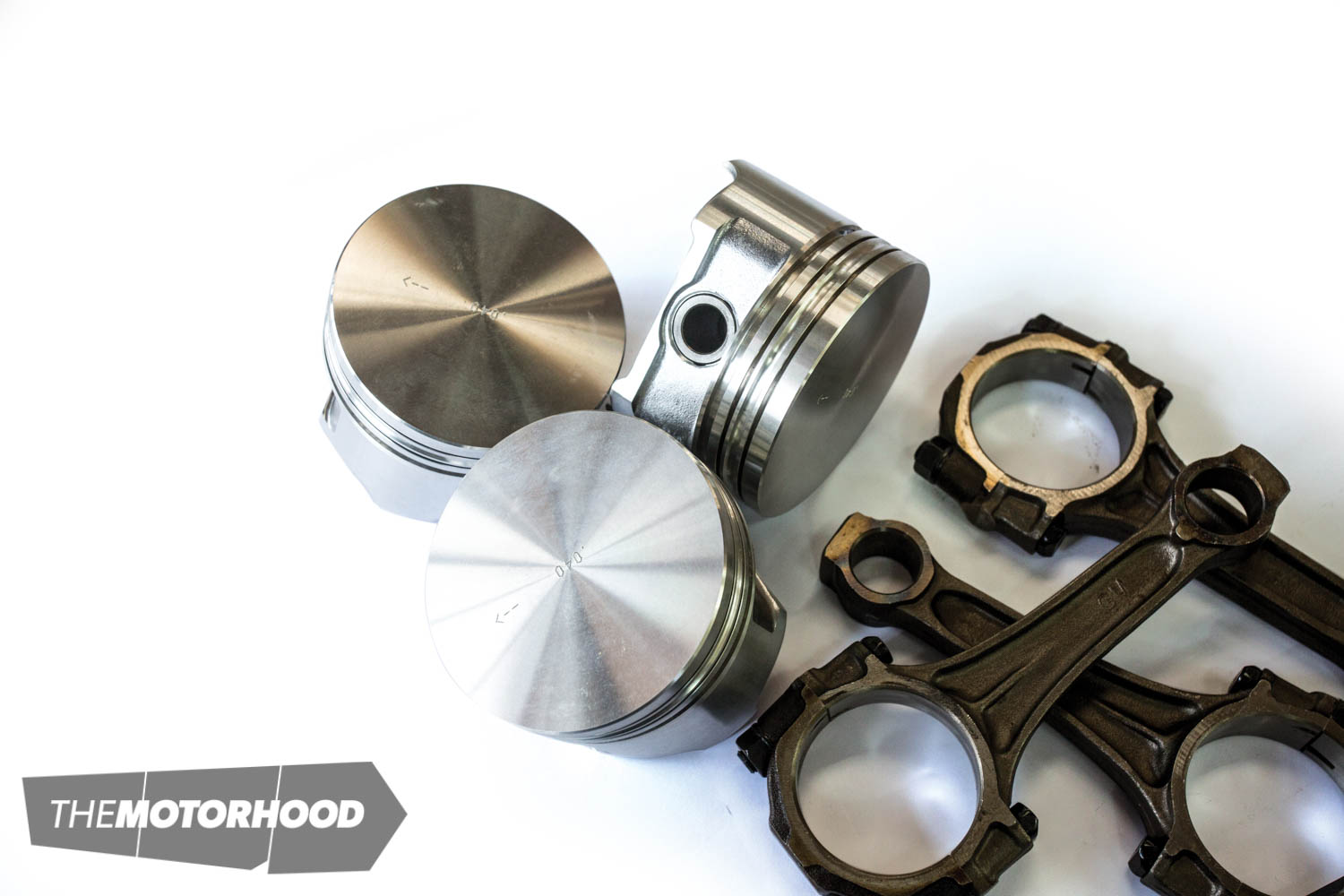
I’m building XYZ engine — what type and size of piston should I run?
The team at Paramount Engineering told us, “The choice is dependent on what purpose the entire combination will serve. You need to consider what power you are chasing, how it will be used, and what boost it’s going to run [from none to plenty]. For obvious reasons, the pistons have to be mechanically strong enough to deal with the pressure it will experience, and since, in most instances of Japanese cars, boost is your friend, you need a piston that is going to manage that load — that is, you don’t want to thin the bore right out to fit a thicker piston; you would stick to the stock bore size and use a piston designed for that pressure. This is where terms like ‘forged’, ‘billet’, ‘heavy-duty’, etc. get thrown around. Although commonly marketed as forged, most units are actually billet examples, which have been machined down from a solid block of material to the desired shape and heat treated. A forged unit is punched between two surfaces to form a shape and is stronger.
“Another factor is what fuel the combination will run. Different fuels mean different conditions in the cylinders: running E85 will keep combustion temps down and reduce detonation, which allows you to feed more boost in the cylinder — a stronger piston will be required — whereas avgas has a limit to how much boost you can run and causes compression to rise as boost goes up, so your piston choice will need to cover a range of pressure there. Your general 98-octane can’t handle as much boost, meaning that most off-the-shelf options from a reliable manufacturer will have you covered.”
Do different types of induction change how the rings are gapped, and how is it done?
“Definitely, especially for higher-cylinder-temp applications like nitrous. When you run nitrous, more gap is required, as the rings run hotter and expand as temps go up, causing the gap to close. Really high boost outputs also need to have a larger gap, for similar reasons. Gap is more important than people give it credit for, and often they will be worried about losing compression, but a little bit of lost compression when cool is worthwhile when a ring can ‘butt’ when hot and cause a heat seizure. Again, this is where planning what you intend to do with an engine prior to buying parts is important — if you’re unsure, check with the piston manufacturer or trusted local rebuilder and follow their recommendations.”
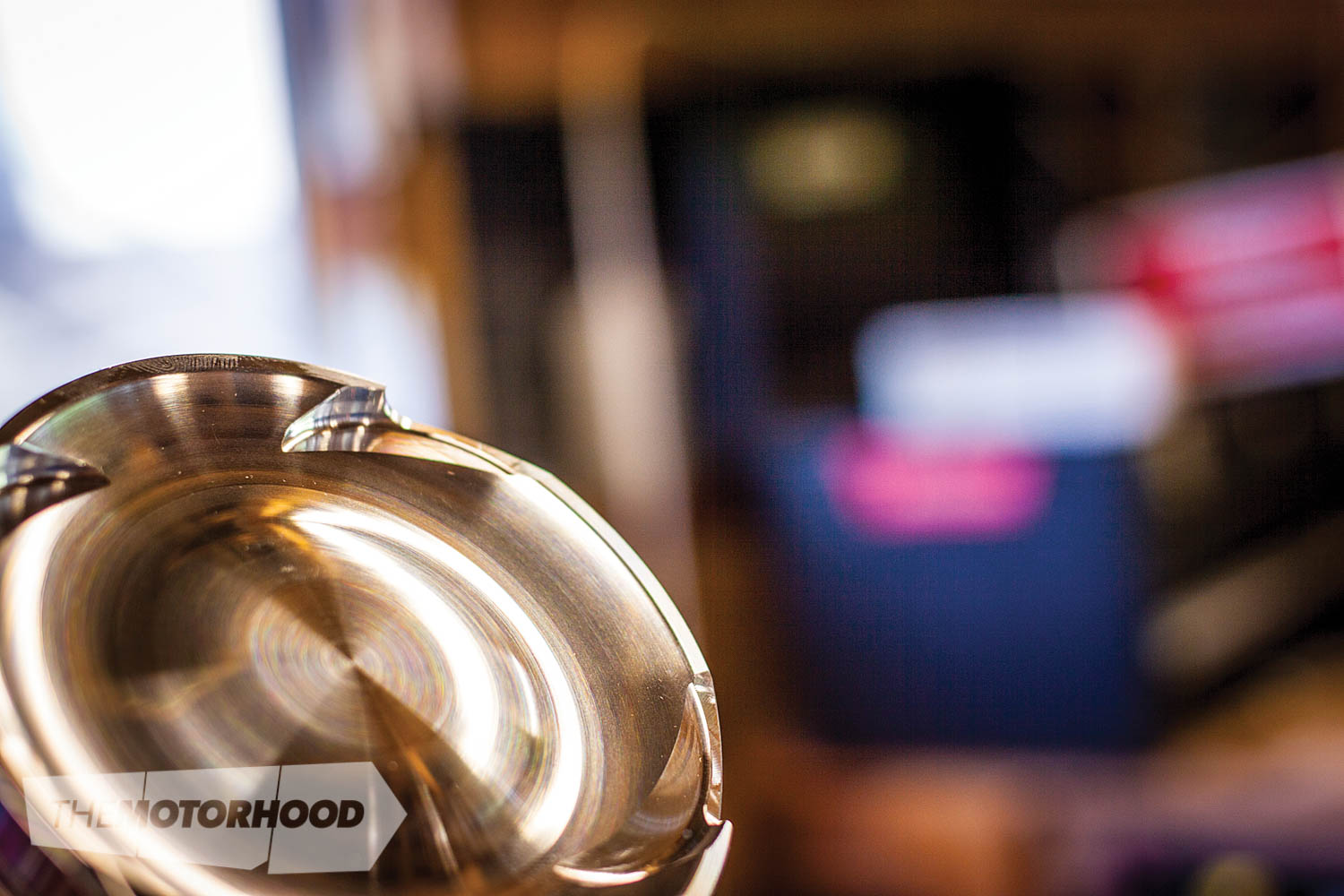
When changing compression ratios, what do I need to take into account?
“For naturally aspirated applications, you want to raise compression. This can be achieved by using a domed piston, shrinking the volume of the cylinder chamber to create more pressure under combustion, and raising the compression ratio. This used to be achieved by surfacing the head and an assortment of other less-than-ideal tricks, but with modern-day engines, it’s a lot simpler. Boosted engines are already causing the compression to rise, so you want to lower the compression. This can be done by using dished pistons, which increases the volume of the cylinder chamber to lower compression. That is not to be confused with ‘pocketed’ pistons that feature grooves to provide clearance for valves.”
What kind of machine work needs to be completed to support upgraded pistons?
“The main one is piston-to-bore clearance, and the bore hone pattern. This is the gap between the skirt of the piston and the wall of the cylinder. This kind of work can be achieved simply by a reconditioner using a boring and/or honing machine to set the clearance, which is specific to the type of piston used, and some manufacturers will have slight differences in requirements. For example, forged pistons run more clearance than a cast-iron equivalent; although, if measured, each would appear the same size, more clearance is required to cope with the expansion of the forged option. This used to be a great deal, around the 10-thou [0.010-inch] mark, but, with really good modern designs commonplace now, it’s typically around fouth thou [0.004-inch] of clearance, depending on piston manufacturer.”
Am I good to run factory rods with upgraded pistons?
“You can reuse factory rods, but, of course, there will always be limitations on this, and it goes back to the combination you’ll be running. The main thing is to check the rod for wear. Things like the little end bearing can wear over time, and people overlook the standard rod bolts — always replace them, as these are the first to go. They will also require machining to resize the rod and end cap to form a perfect circle. On the whole, however, most rods are pretty strong these days, with an extra strength built into them; it’s when you start chasing more serious power that they need to be upgraded. Failures generally only occur in supporting components, like the gudgeon pin or rod bolts — of course, if a bearing goes, then nothing is going to survive.”
And are there general rules concerning maximum boost pressures that certain material rods will take before failing?
“You want to break it down along the lines of how much power is made per cylinder. When you’re running really high boost pressure to achieve mass amounts of power, around the 1000-horsepower [745-kilowatt] mark, then you will want to talk with rod manufacturers to get specialist material units. However, for your day-to-day builds around 500hp [370kW] or so, a billet rod off the shelf that is designed for your specific engine from a good manufacturer, not the cheap copies, will handle well.
“You really need to sit back and plan out each step before buying parts. It’s all too common [for us to] … see guys who will buy shiny parts after reading about another build, they’re buying one or two bits the same and expecting to make the same results with a different combination.”
Paramount Engineering
09 426 4373
aucklandenginereconditioner.co.nz
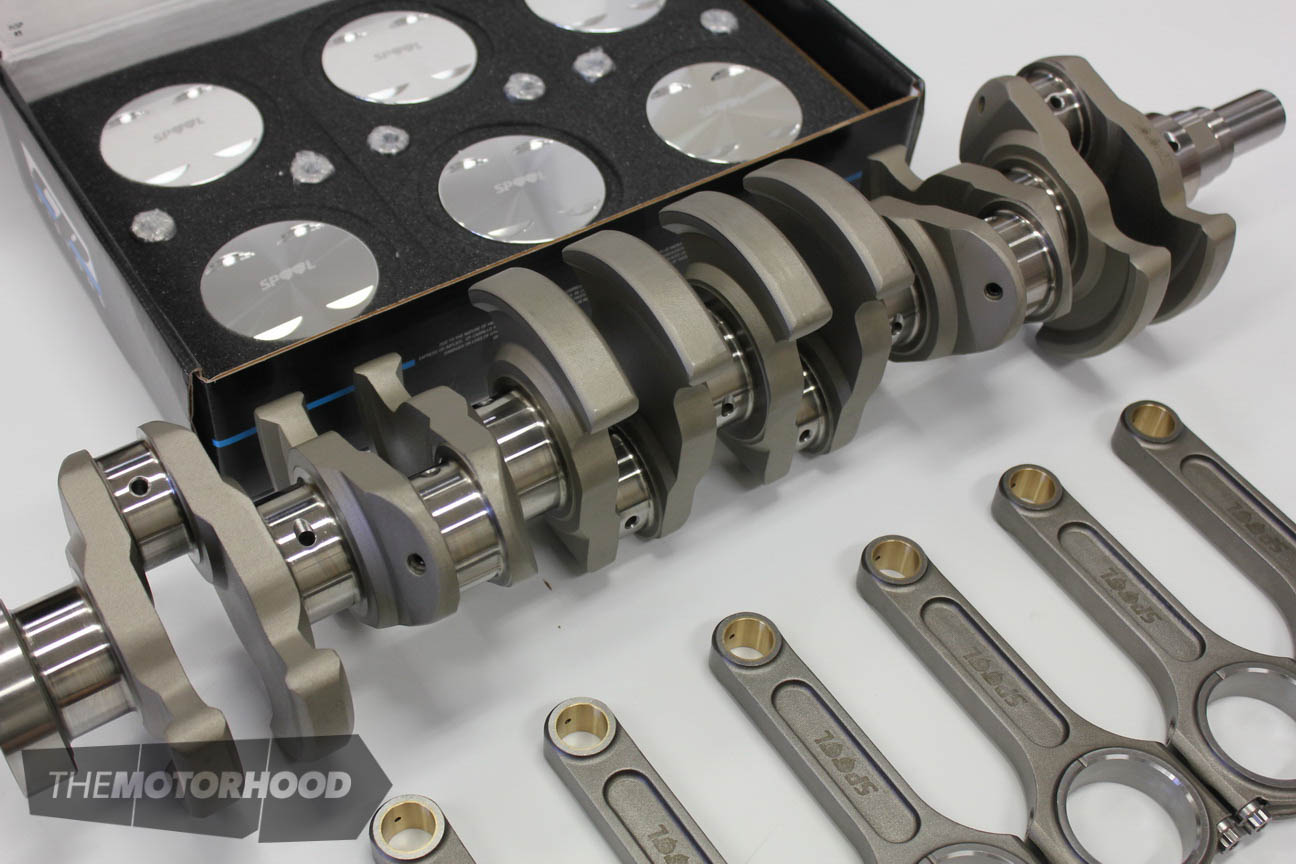
Will my factory crank handle the jandal with more power, and what are the differences between factory, billet, forged, and nitrided cranks?
Brad from Spool Imports advised: “Chasing power with a cast-iron crank is pretty risky and can cause you a few headaches if it fails and takes your nice bits with it. Factory cranks in most Nissans are pretty tough though, as they come from the factory forged, although they benefit from a stroked equivalent to bring out the extra capacity. Factory cast-iron cranks were produced in bulk cheaply and easily, which is why manufacturers tend to use them. They are fine for the general street car populace, as they aren’t called upon to handle any kind of pressure; it’s when power is fed through an engine that they struggle and break as a result.
“Running a forged or billet option is much, much stronger and opens the doors for making power: ‘forged’ simply means that the material is pressed between dies to create a shape and then is machined to suit, whereas ‘billet’ is a solid piece of material that is machined down to create a shape. Both forged or billet cranks can be ‘nitrided’, as it is a heat-treating process that scatters nitrogen over the surface of the metal to form a case-hardened surface.
How is a stroker crank different from a factory crank?
“This [a stroker] is an aftermarket system that increases capacity by increasing the travel of the pistons [the piston moves farther up and down the cylinder] and uses leverage to produce more torque. A stroked crank also causes the turbo to spool earlier and bring boost on faster over a standard stroke engine. Overall, stroked cranks produce better power increases than a bore kit that achieves the same displacement. In the case of our RB30-34 kit, stroke is increased from the standard 85mm to 94mm, and, as above, being a billet nitrided example, its strength over the factory option is a huge seller. It includes custom pistons, with the pin height adjusted to allow for the longer stroke, and forged rods. Essentially, these types of kits give you more cubes, more capacity — 1.6-litre 4A-GEs become 2.0-litre; 2.0-litre SR20s become 2.2-litre; 2.6-litre RB26s become 2.9-litre, etc.”
And what is the limit I can go to on a stroked engine?
“People like to talk about how they don’t rev because the longer stroke needs to be achieved in the same time as a regular stroke and slows things down, but that’s simply untrue. We have kits in local drift cars that are revving out to 9000rpm without issues. In terms of longevity, [the] supporting components will be what goes if something were to go wrong, things like bearings, bolts, pins, etc. These nitrided billet and forged pieces are bulletproof.”
What are my bearing options with a stroked crank?
“We recommended running ACL Race Series bearings with our kits. The standard series will work but aren’t built for the pressures found in engines these kits are going into. Make sure you use the recommended size.”
People have told me that race bearings need to be replaced more often — is this true?
“This is a rumour that seems to go around, but [it] is unfounded. Once bearing clearances are set, they will function exactly as intended. Obviously, if you’re running a big-power, high-revving drag car, then you’ll be checking them more regularly, but a mild street car won’t cause you any grief.”
Spool Imports
+61 07 3297 1074
spoolimports.com
Block work
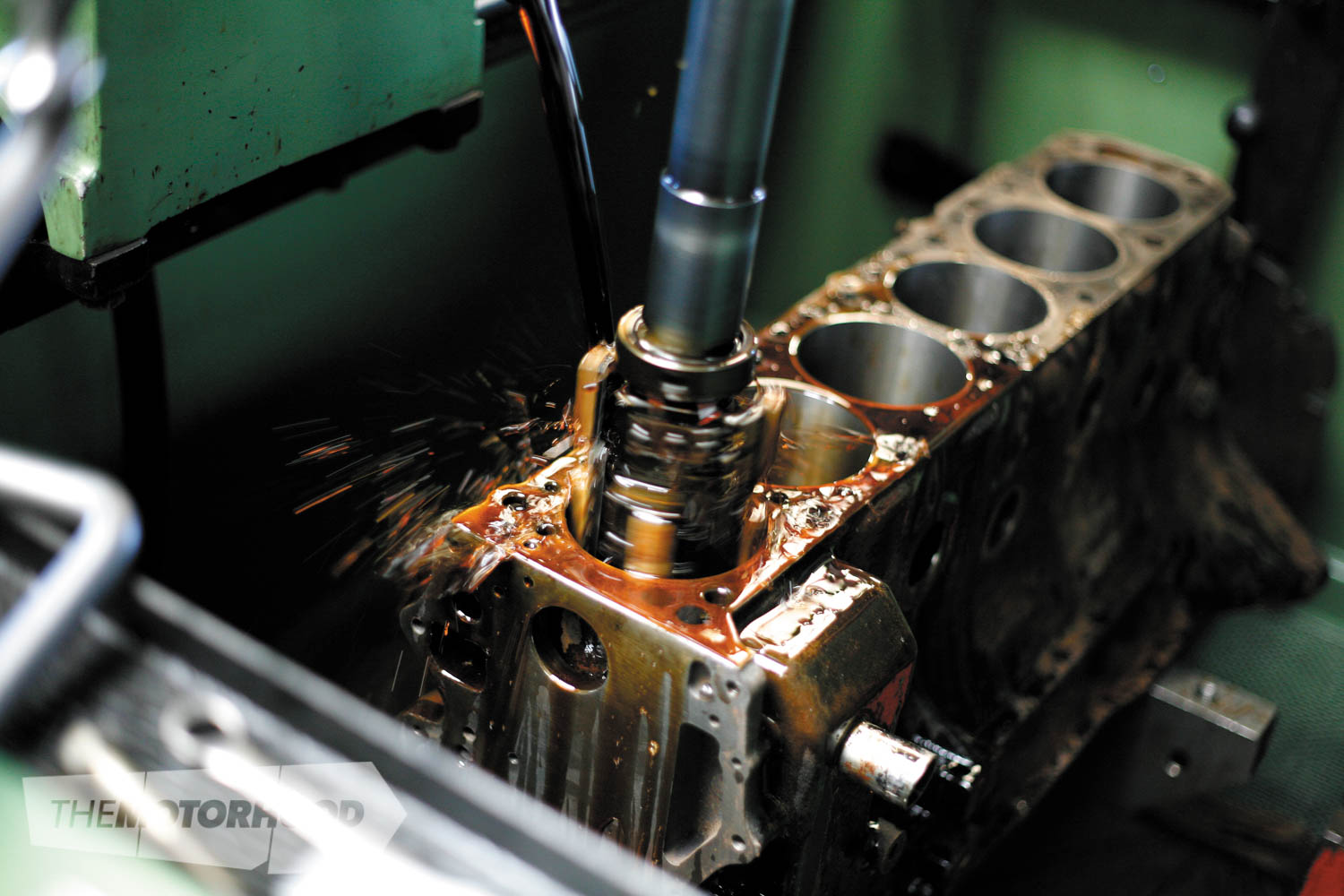
What are the pros and cons of using cast-iron and alloy blocks?
Scott from GER Engine Specialists said: “A cast-iron block, by the nature of the material and manufacture process, is going to be much heavier than an alloy equivalent, so weight is a big factor and the alloy claims a win there. The downside, however, is that when they get really hot, the alloy can soften up and cause warping — although this issue can occur in a cast-iron block, it’s much more prominent in alloy equivalents. Both suffer from cracking, and the cast-iron block is more prone to this over time. Based on what the engine is, manufacturer and model, different engines will have their own unique faults that are commonly found. Take a Nissan SR20, for example — sleeves are cast into the alloy block and are alloy at the top of the bores. To prevent melting under detonation, you can have top flange sleeves machined and fitted, allowing the gasket to sit on top of the top flange sleeve correctly.”
When using a second-hand block, what checks should you do to ensure it’s in good health?
“The biggest check you want to undergo for a cast-iron block is crack testing. You can visually inspect the block with a fine-tooth comb and be none the wiser of what is waiting to wreak havoc. Crack testing involves magnetizing the block and spraying on a magnetic fluid that shows cracks up as yellow lines under an ultraviolet light, which would otherwise be impossible to see with the naked eye. Alloy blocks are much the same, but the concern is for softening and warping instead. You can run an electronic hardness test that looks for signs of damage to the integrity, and a straight edge can be used to see if the decks have been warped.
“Overall, you’d want to measure the bore size to see what it actually is — you may have been sold a ‘perfect stock’ block by a less-than-forthcoming seller, that is actually bored beyond the point of saving without machining sleeves in.”
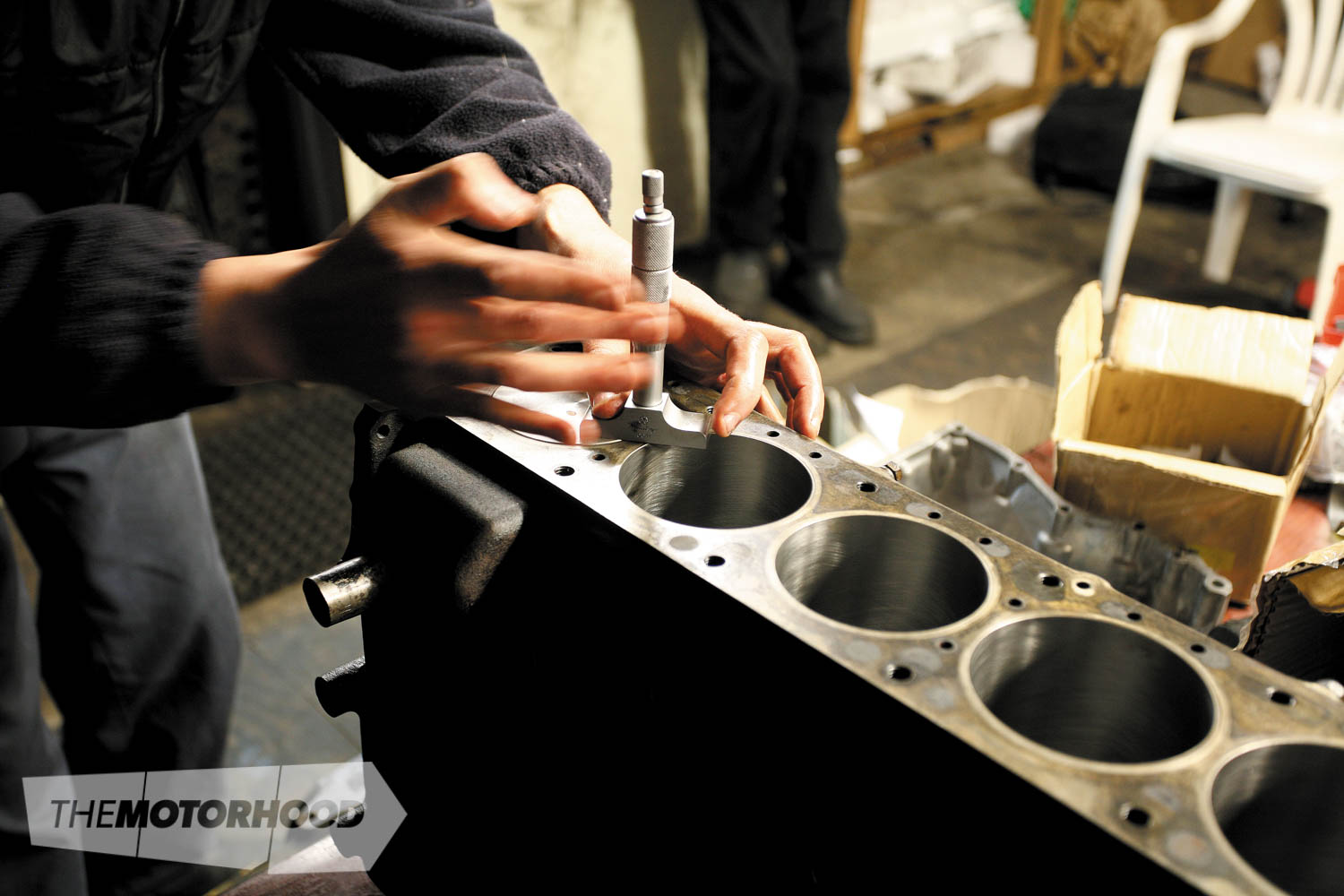
When do I need to sleeve my bores, and what does this mean?
“Expanding on what I mentioned before, sleeving is about strength. Sleeves are used on the likes of open-deck Honda blocks, which have issues with cracking under boost, and can be fitted with a Darton-type top flange sleeve to safeguard the block when running those higher boost pressures. Sleeves can also be used when a bore is too badly worn to be bored or honed to reclaim it. A blank sleeve is fitted and bored to the desired size, which, in most instances, is the factory bore specification.”
What are some other types of strengthening I should be considering for my big-boost engine?
“That really depends on the manufacturer and style; a lot of Japanese manufacturers have mains girdles that tie the caps together. By effectively tying the bottom end together and creating a solid unit, you prevent the bottom end from throwing its guts out under pressure. An SR20 uses an alloy girdle plate, while some Hondas have the three centre mains tied together, and an Evo has a one-piece mains girdle. Although strong in their factory form, you can get stronger aftermarket and custom examples to help cope with large amounts of boost pressure.”
I’m worried that my engine will starve of oil. What can I do to the sump to help?
“I usually recommend adding extra capacity to the sump, so [that] there is more oil on tap when required under heavy load. This can be achieved by fabricating wings on the sump, which increases volume. These can also be purchased off the shelf for the more popular engines these days, too.
“If you want to do some spirited driving and the occasional bit of track work, you can’t go amiss with additional sump baffling. This helps with cornering and acceleration load that would otherwise starve the engine of oil by forcing it away from the oil pickup.”
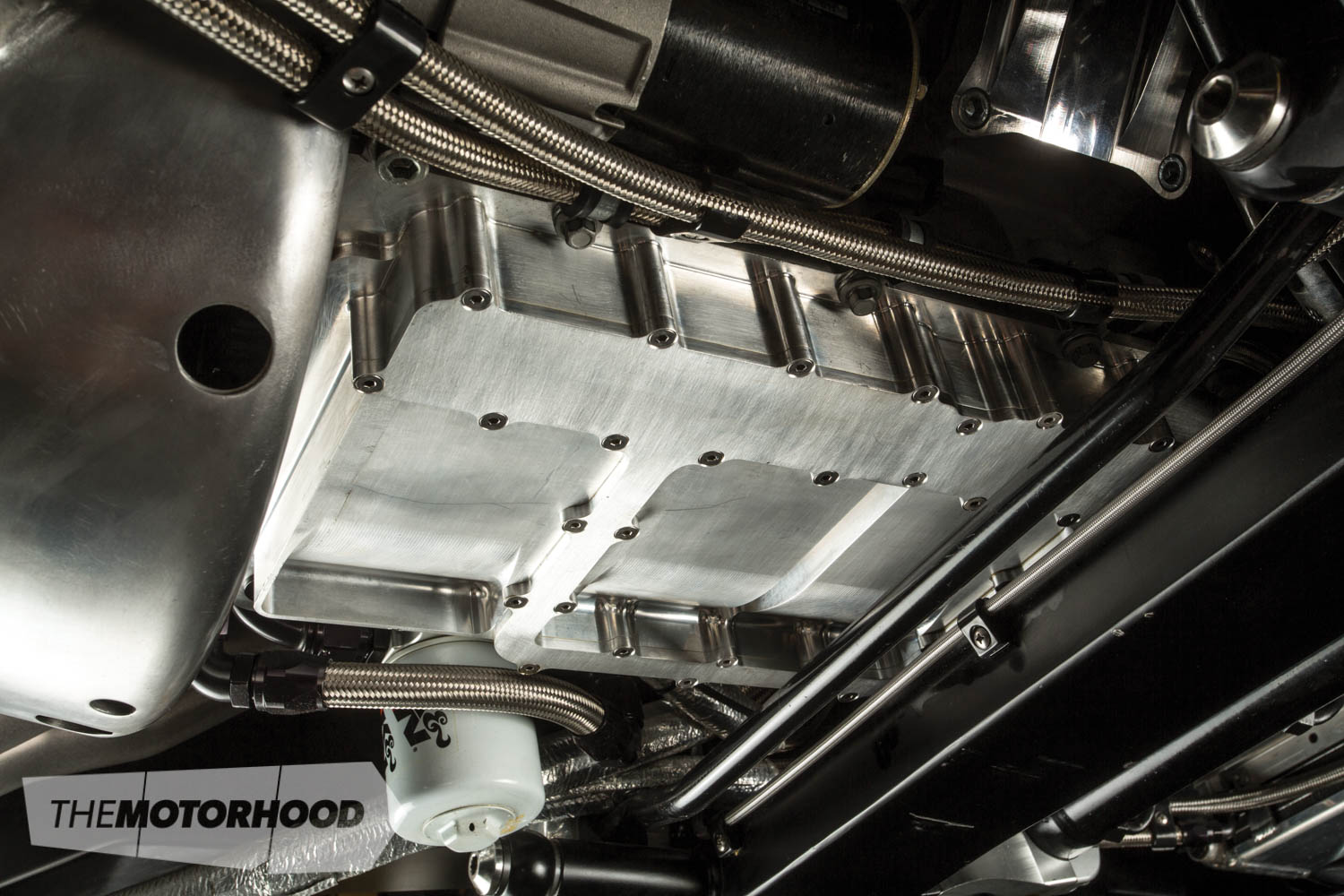
At what stage would I need to consider upgrading to a dry-sump system?
“Dry sumps were, traditionally, a pretty serious piece of kit that would be used on major competition engines, incorporating an external tank that holds oil scavenged from the engine when not in use. Oil is pumped to a tank inside the car and straight back into the engine via a filter system, keeping a consistent flow of oil circulating, and preventing starvation. But, nowadays, with many people using their daily-driver and street-legal cars for some light-to-moderate track work, they aren’t all too uncommon and are a worthwhile investment if you are experiencing oiling issues.
“Some cars suffer more than others. We’ve found that the sweeper into grid straight at Hampton Downs [Motorsport Park] can cause issues within the later generations of Mitsubishi Evos (IV onwards) while I, II, and III are fine. The main sweeper causes oil to run away from the pickup on the IV onwards, while it’s on the opposite side in the earlier generations. So, a dry sump would certainly benefit a lot of cars, if it’s within the owner’s budget.”
GER Engine Specialists
09 818 5352
ger.co.nz






